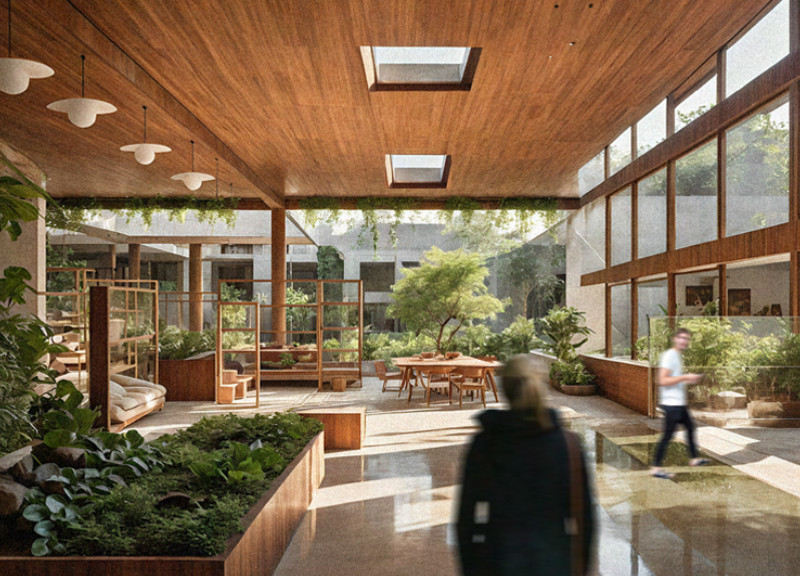5 key facts about this project
At its core, the project serves as a multi-functional space, designed to accommodate a variety of uses. Whether it's a community hub, a residential complex, or a commercial site, the architecture reflects the needs of contemporary society while maintaining a sense of place. The careful planning and layout ensure that users can navigate the space seamlessly, promoting interaction and engagement among occupants while respecting private areas.
One of the distinguishing features of the architectural design is its emphasis on material selection. The project employs an array of materials, thoughtfully chosen for their durability, aesthetic qualities, and sustainability. Concrete is used for its structural integrity, providing a robust framework that supports the building's form. Steel elements enhance the design's modern appeal while ensuring safety and longevity. Incorporating wood adds warmth and texture to the interiors, creating an inviting atmosphere. The use of glass not only maximizes natural light but also offers transparency, connecting the indoors with the outdoors and fostering a sense of openness.
The design pays particular attention to the facades, which are a vital part of the building’s identity. They are articulated with various textures and patterns that invite curiosity while blending harmoniously with the surroundings. Large windows and strategically placed openings ensure that natural light floods the interior, contributing to an uplifting environment. This design approach not only enhances the aesthetic appeal but also promotes energy efficiency and reduced reliance on artificial lighting.
The project also embraces innovative techniques that reflect a contemporary understanding of sustainability. Green roofs, rainwater harvesting systems, and energy-efficient heating and cooling mechanisms are all integral parts of the design. By incorporating these features, the architecture not only reduces its environmental impact but also demonstrates a commitment to sustainable living practices, resonating with a growing audience concerned about ecological issues.
Further enhancing the user experience, the design incorporates flexible spaces that can be easily adapted for various functions, supporting both individual and communal activities. The interiors are characterized by open layouts that encourage interaction, while still allowing for private retreats. This blend of communal and private spaces fosters a sense of community and belonging, which is increasingly important in today's urban environments.
Unique to this project is its responsiveness to local cultural contexts. The architectural design draws inspiration from regional styles and traditional materials, creating a dialogue between the past and the present. This thoughtful integration promotes a deeper connection to the location, allowing the architecture to resonate with both residents and visitors. By respecting the local heritage while also looking toward the future, the design establishes a meaningful narrative that enhances its significance.
The project exemplifies a comprehensive understanding of architectural principles, demonstrating how design can effectively address contemporary needs while being rooted in locality and sustainability. As this architectural project unfolds, it invites viewers to consider the myriad ways architecture can shape our experiences and environments. Those interested in gaining a deeper insight into this project are encouraged to explore the architectural plans, sections, designs, and ideas presented, revealing the intricate details that contribute to its overall success.


 Jonas Alexander Martschoke
Jonas Alexander Martschoke 




















